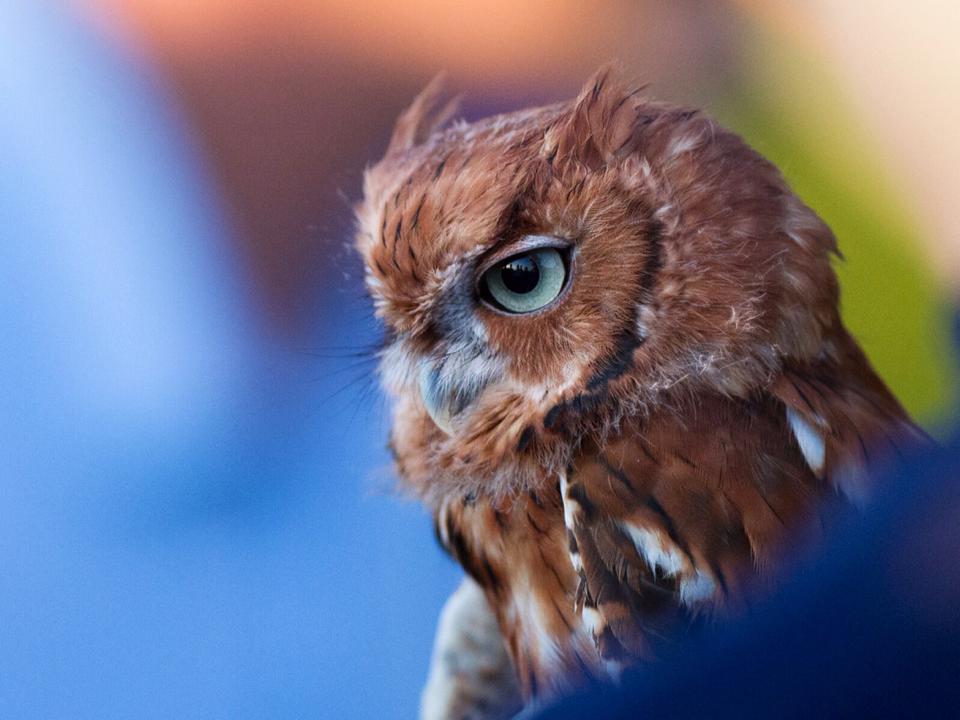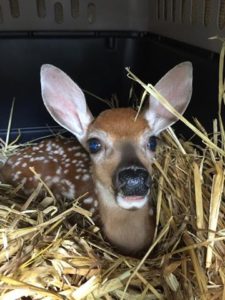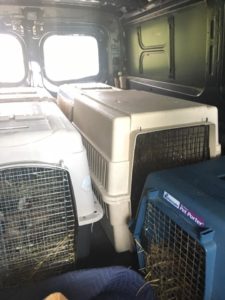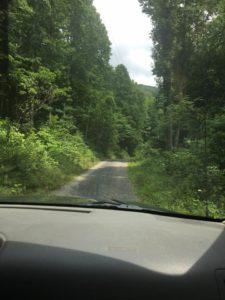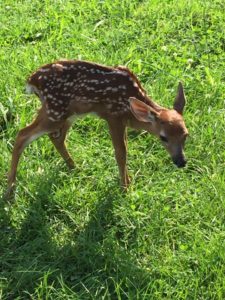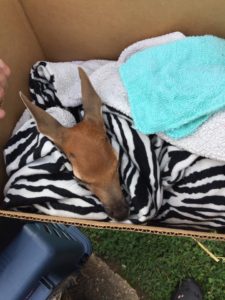That was the entirety of the first conversation with Geri Wynn. So much for directions. To be fair, she likely had an animal in one hand and the phone in the other. Wildlife rehabbers often have their hands full this time of year and your priorities must change a little when you have a hundred mouths to feed. Thank goodness for GPS.
We were only about an hour into the four-hour drive from Chattanooga to Elizabethton and our passengers had hardly made a sound. My travel companion and licensed wildlife rehabilitator at Happinest Wildlife Rescue, Kate Harrell, hopped in the back to check on our most critical bit of cargo. Of the six fawns we had on board, this one was the smallest and had already shown signs of declining health. When Kate returned to the cab, I feared we may be changing the manifest of this journey from six to five live fawns onboard. About an hour later, we did just that. “Sometimes, you just have to take solace in knowing they were comfortable when they passed and there was nothing more you could do”, Kate remarked.
The highways became streets and then country lanes as they often do when your destination pertains to wildlife. The rehab facility was located at the end of a long gravel drive on the edge of the Cherokee National Forest. This particular facility was more accustomed to dealing with large mammals and it wasn’t hard to see why. Located in the Blue Ridge Mountains roughly 10 miles from the Virginia border, the largely undeveloped land is ideal habitat for all manner of native wildlife.
Geri and Keith Wynn greeted us at the end of the drive, their attention focused mainly on the five new patients being admitted to their care. Transferring the little guys into the facility and filling out the intake forms led to a very informative tour of their facility, tips for caring for orphaned fawns and some planning for, possibly, being able to care for them locally in the future. For now, we knew these five fawns were in good hands at Wynnwood.
Geri Wynn confirmed that they had seen an uptick in fawn admissions this year. While fawns may occasionally be orphaned, it is rarely the case. Does will often leave their young curled up in a safe location while they go feed on their own and return several times a day to check on them. This serves as a reminder that if you find a fawn, the best thing to do is watch and see if its mother returns. Geri advises, “Unless you see flies and maggots on the fawn, leave it be.” Although it is necessary to intervene occasionally, nature tends to have a way of taking care of herself and we should sometimes be more obliged to leave our good intentions on our doorsteps.
